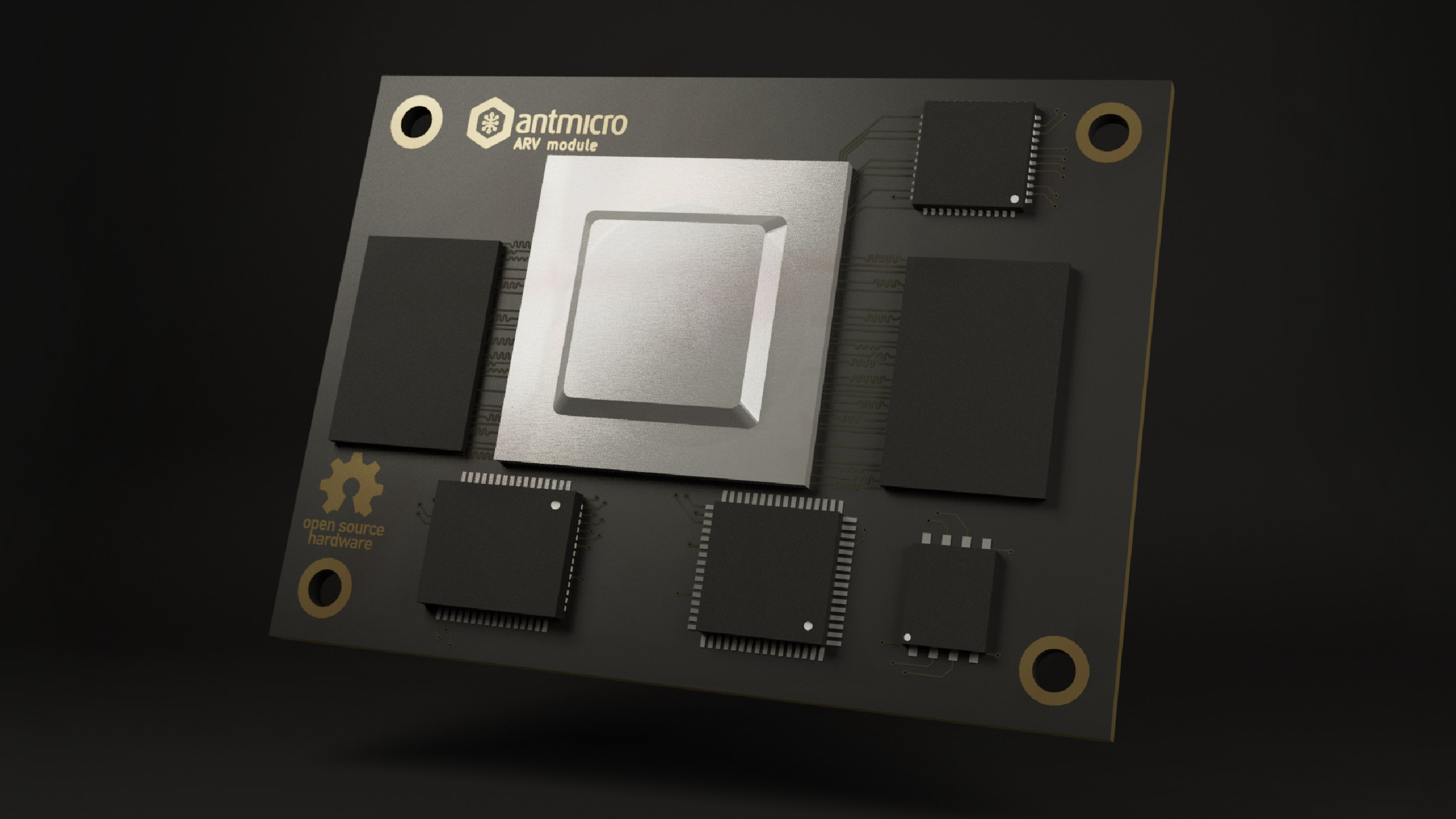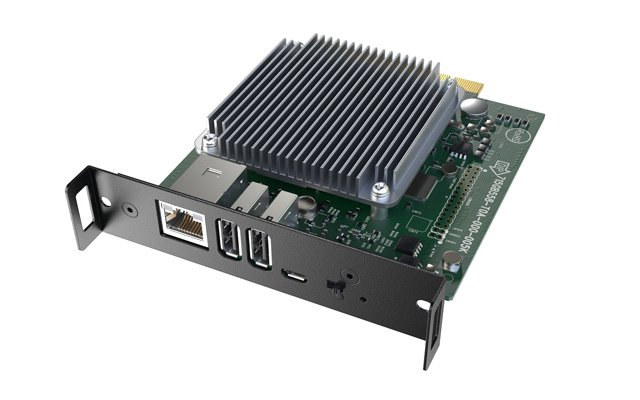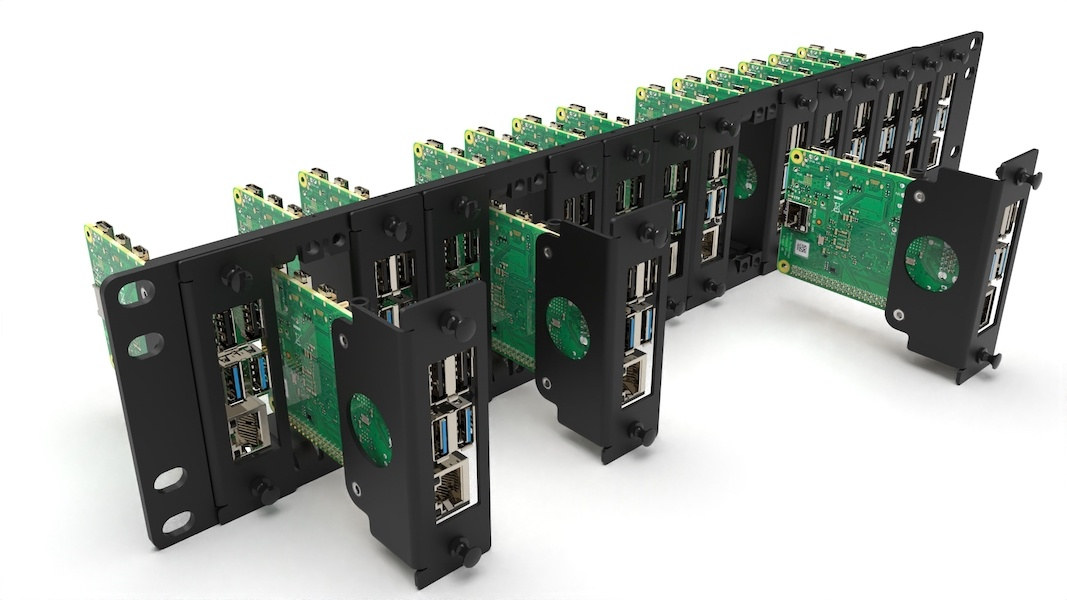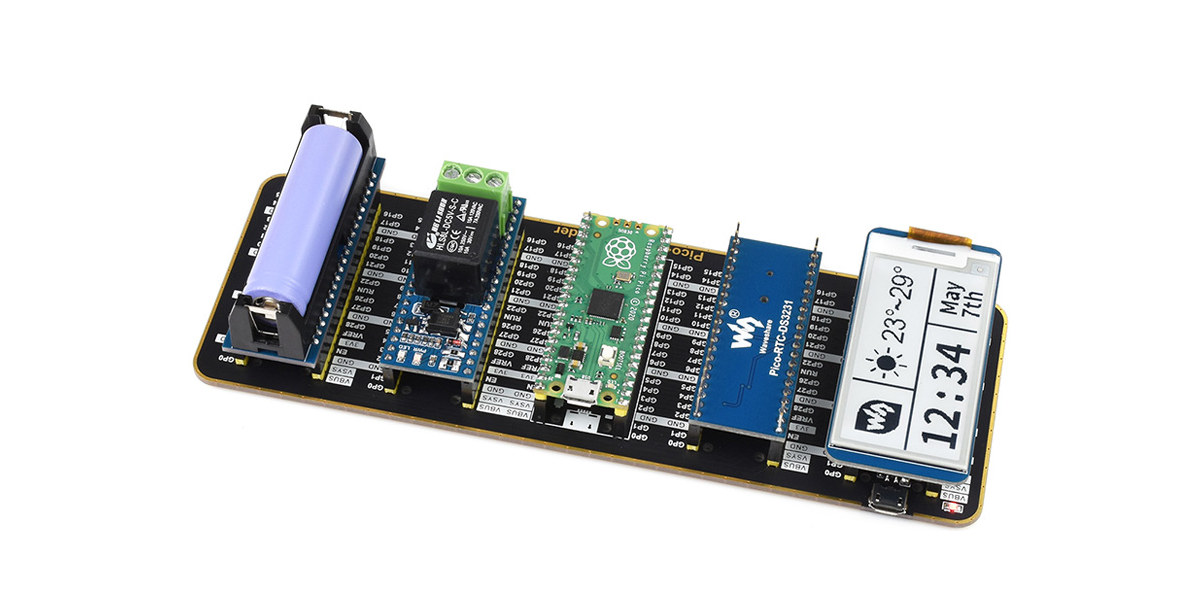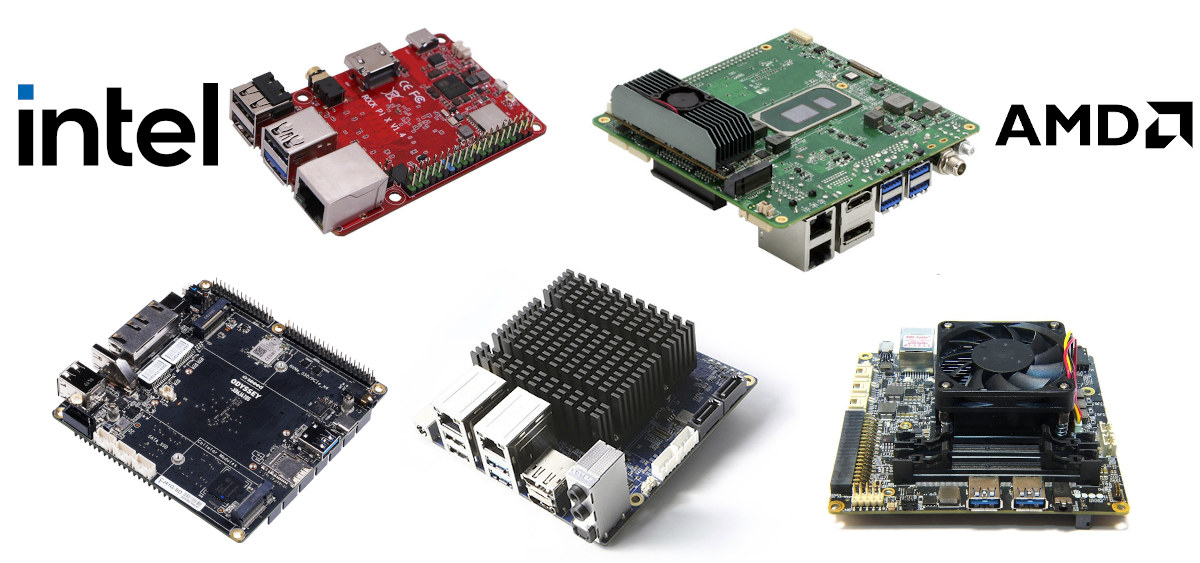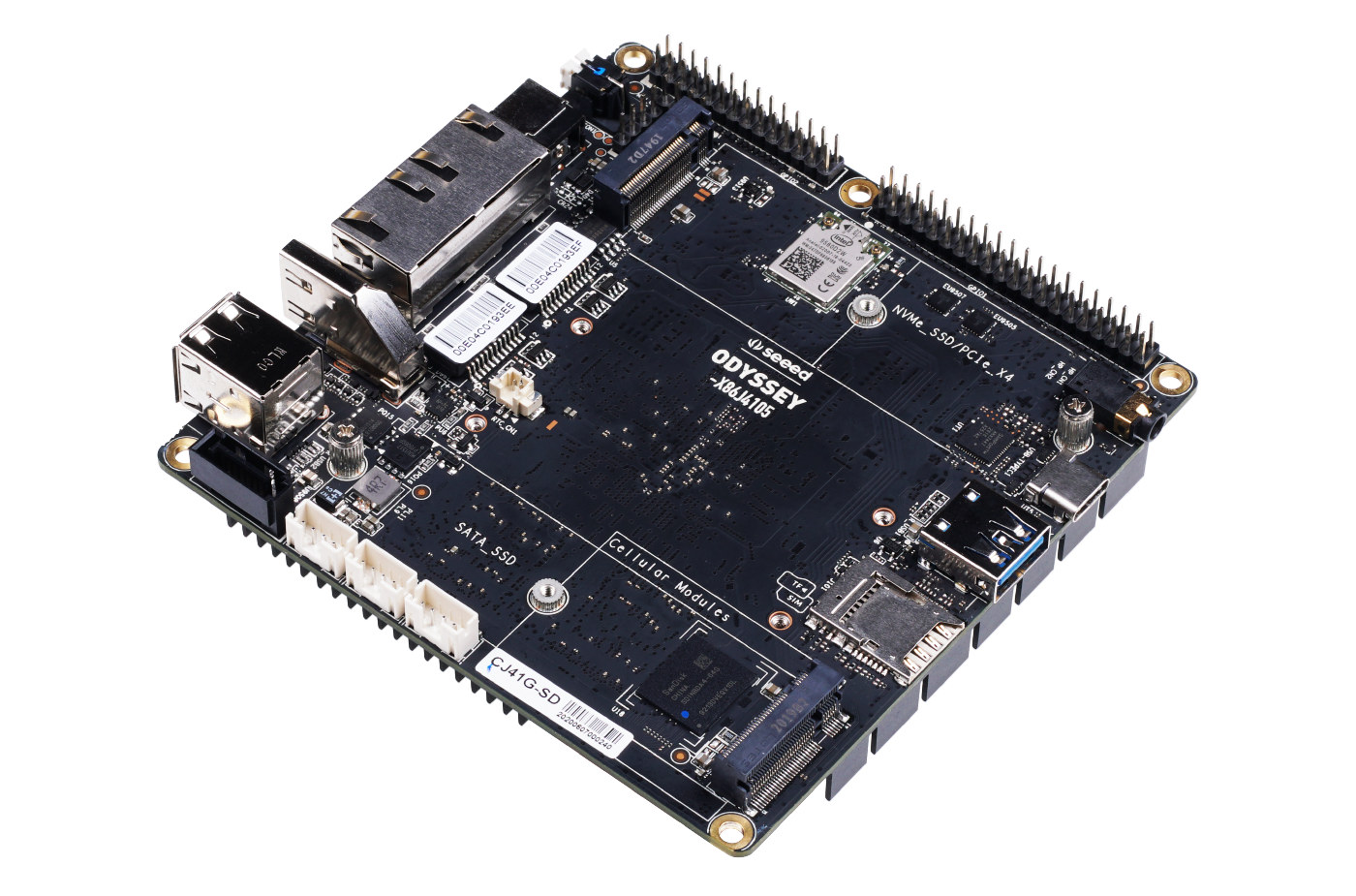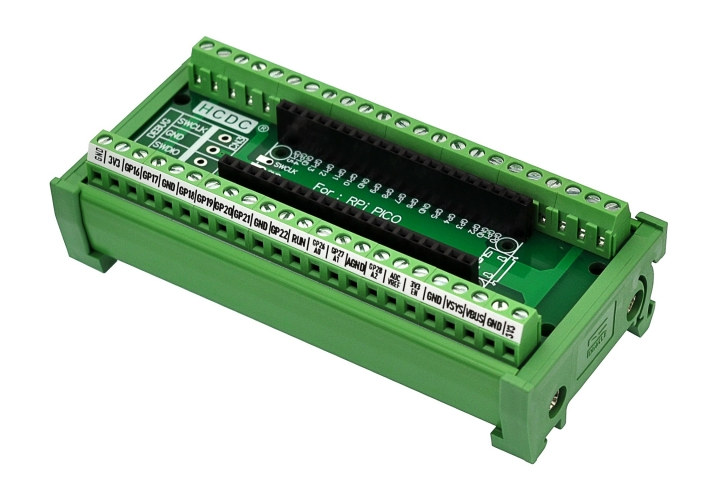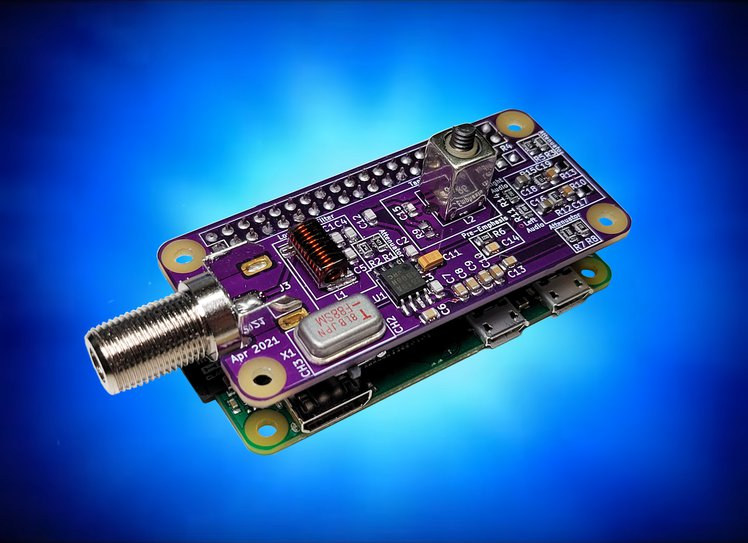The Linux capable BeagleV SBC, now called “BeagleV Starlight”, was announced last January with a StarFive JH7100/JH7110 64-bit RISC-V processor, and developers and beta users have just started to get their hand on the board in recent days. But there’s another StarFive JH71x0 hardware in the works with Antmicro ARVSOM. The system-in-module will feature the dual-core RISC-V processor, and be compatible with Raspberry Pi CM4, and by extension Antmicro’s Scalenode server-oriented baseboard. The company did not provide the complete specifications for the module, but based on public information available, Antmicro ARVSOM should feature the following: SoC – StarFive JH7100 Vision SoC: RISC-V U74 dual-core with 2MB L2 cache @ 1.5 GHz Vision DSP Tensilica-VP6 for computing vision NVDLA Engine 1 core (configuration 2048 MACs @ 800MHz – 3.5 TOPS) Neural Network Engine (1024MACs @ 500MHz – 1 TOPS) VPU – H.264/H.265 decoder up to 4Kp60, dual-stream decoding up to 2Kp30 […]
MPi4 NEC MediaPlayer Kit slot-in card powers 4K digital signage displays with Raspberry Pi CM4
NEC Display Solutions has been integrating Raspberry Pi Compute Modules into commercial displays used for digital signage and presentation platforms for over 5 years now. The company, now called Sharp NEC Display Solutions, has launched a new Intel Smart Display Module (SDM)-like slot-in card based on Raspberry Pi Compute Module 4 called “MPi4 NEC MediaPlayer Kit” and designed as an entry-level card alternative to the company’s Intel SDM slot-in cards designed for NEC large format 4K displays. MPi4 NEC MediaPlayer Kit specifications: SoM – Raspberry Pi Compute Module 4 “NEC Edition” with SoC – Broadcom BCM2711 quad-core Arm Cortex 72 @ 1.5GHz, VideoCore IV GPU with OpenGL ES 3.0 graphics, H.265 (HEVC) up to 4Kp60 decode, H.264 up to 1080p60 decode, 1080p30 encode System Memory – 4GB LPDDR2 SDRAM Storage – 32 GB eMMC flash Dimensions – 55 × 40 × 4.7 mm Interface Board for Raspberry Pi Compute Module […]
19-inch rackmounts support up to 16 front-removable Raspberry Pi SBC’s
We previously covered Myelectronics’ 19-inch rackmount taking up to 12 Raspberry Pi boards. The solution is nice to keep a bunch of Raspberry Pi 4 in a small space and expose the HDMI ports as full HDMI ports. But what happens if you need to replace a Raspberry Pi board, or simply change the MicroSD card? Yes, you’d typically need to turn off all boards, remove the rack mount, replace the board/install the MicroSD card, and reconnect everything. That’s probably why the company has now launched two new 19-inch 2U and 3U rack mounts respectively supporting up to 16 front-removable Raspberry Pi (model B) single board computers. That works a bit with a typical NAS, where you insert or remove a hard drive by pulling it out and back. The 2U rackmount pictured above comes with front-removable brackets where you can install the Raspberry Pi, as well as mounting screws, […]
Quad GPIO Expander for Raspberry Pi Pico adds battery, display module, sensors, etc…
People are normally using MCU boards for their low cost, low-power consumption, low price and/or real-time ability. The Raspberry Pi Pico is no exception, but if you don’t care about using a large board, Waveshare created a 177 x 62 mm “expander” board for the Raspberry Pi Pico that can take four modules. The company’s Quad GPIO Expander board includes a set of female headers for RPi Pico, and four sets of 2×20 male headers for extra modules that bring support for 14500 batteries, OLED displays, RTC, relays, and other compatible modules. The expansion board also has a Micro USB port for power, and to leave the Micro USB OTG port on the Raspberry Pi Pico for other purposes. Each header pin is clearly labeled, which could be useful if using some of the pins with jumper wires instead of modules. Waveshare has hundreds of different modules and somehow decided […]
The 5 best Intel & AMD single board computers for makers
A few weeks ago, we wrote a list of what we consider to be the top 5 most powerful Arm SBC’s and development kits, and this time around we’ll cover x86 SBC’s powered by Intel or AMD processors. But this time around, instead of focusing on the most powerful x86 single board computers which would lead to unaffordable, industrial Xeon SBC’s, we’ll be looking into the 5 best boards designed for makers. That means affordable pricing, I/O headers, and community support. The list is in no particular order. Rock Pi X – x86 on the cheap If you ever wanted the cheapest possible x86 board, Atomic Pi SBC $35 price tag was hard to beat, but it was only cheap because it was sourced from a failed robotics project, and not very convenient to use. But now in 2021, the cheapest x86 SBC that can run Windows is clearly Rock […]
ODYSSEY-X86J4125 SBC gets a faster Celeron J4125 SoC and a price increase
ODYSSEY-X86J4105 is an Intel Gemini Lake SBC designed for makers with Arduino compatibility thanks to a Microchip SAMD21 microcontroller, as well as Raspberry Pi headers. We reviewed the board and enclosure last year both with Windows 10 Enterprise and Ubuntu 20.04, and we also successfully tested the Arduino and Raspberry Pi GPIO headers with the latter. But the Intel Celeron J4105 quad-core Gemini Lake processor has been scheduled for discontinuance since last year, and the last order on January 22, 2021, and the final shipment on planned for July 9, 2021. So Seeed Studio had to find a replacement, and they’ve now launched ODYSSEY-X86J4125 single board computer with the same features, but switching to a slightly faster, and still available, Intel Celeron J4125 processor. ODYSSEY-X86J4125800 SBC specifications: SoC – Intel Celeron J4125 quad-core Gemini Lake Refresh processor @ 2.0 / 2.7 GHz (Turbo) / 2.4 GHz (Turbo all cores) with […]
Terminal Block modules for Raspberry Pi Pico come with screw or DIN rail mounting option
if you’d like to use terminal blocks with your Raspberry Pi Pico, or compatible board, instead of soldering wires to the MCU board, HCDC’s Terminal Block Breakout Module may meet your requirements with variants for either screw or DIN rail mounting. Description/specifications: PCB mount Terminal Block with 5 mm pitch, 7mm strip length, M2.5 screws – Wire range 28AWG ~ 12AWG / 2.5mm square. FR-4 fiber glass PCB, dual copper layers. Mounting options Screw version – “Taiwan high-quality” fireproof nylon material mount carrier (“not China low-quality carrier”). DIN rail version – “High-quality Taiwan” DINKLE fireproof nylon material DIN rail mount carrier (“not China low-quality carrier”); supports 35mm wide rail. I have not mentioned it in the introduction, but after reading the specifications, it appears (Xuken) HCDC may be based in Taiwan. 🙂 The company explains its Terminal Block Breakout Module for Raspberry Pi Pico is best suited to industrial control, […]
PiMod Zero for Raspberry Pi Zero SBC broadcasts video to your older NTSC TV (Crowdfunding)
Playing retro games or watching older movies on your Raspberry Pi Zero board over a modern digital video interface like HDMI clearly ruins the experience! 😉 While it should be possible to use to 2-pin reserved for video composite on the Raspberry Pi Zero to connect to an old TV, PiMod Zero HAT allows you to get back that retro feeling even with TVs lacking RCA composite and audio inputs by broadcasting video over VHF to older NTSC compatible televisions. PiMod Zero specifications: Operating frequency – VHF channels 2 and 3 (55.25 MHz and 61.25 MHz) Broadcast format – NTSC RF output power – 0.005 mW Impedance – 75 Ω Supply voltage – 5 V Power draw – 100 mW Dimensions – pHAT form factor The expansion board supports both color and B&W video, as well as audio. There were already solutions to achieve the same results, but Isotope Engineering […]


